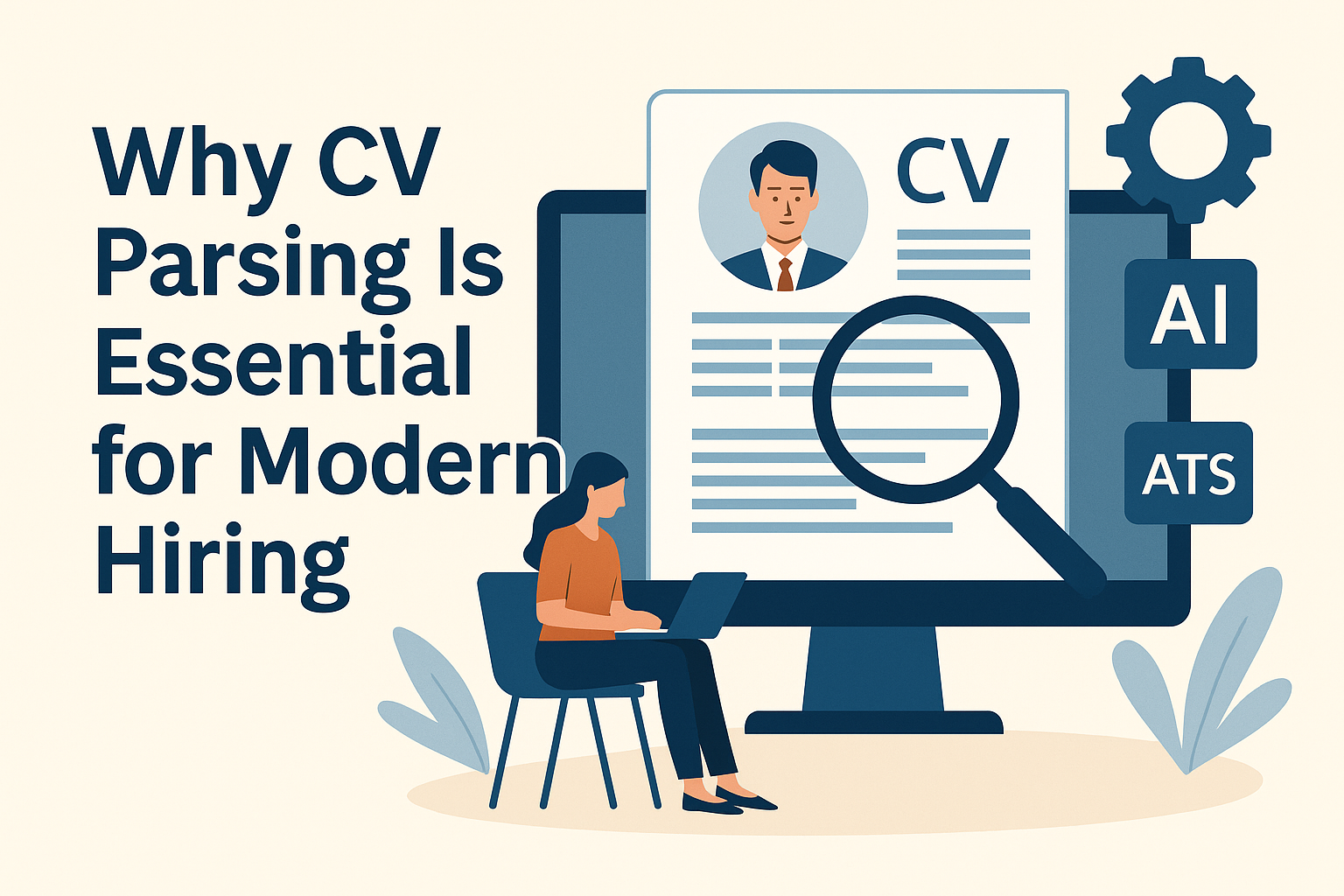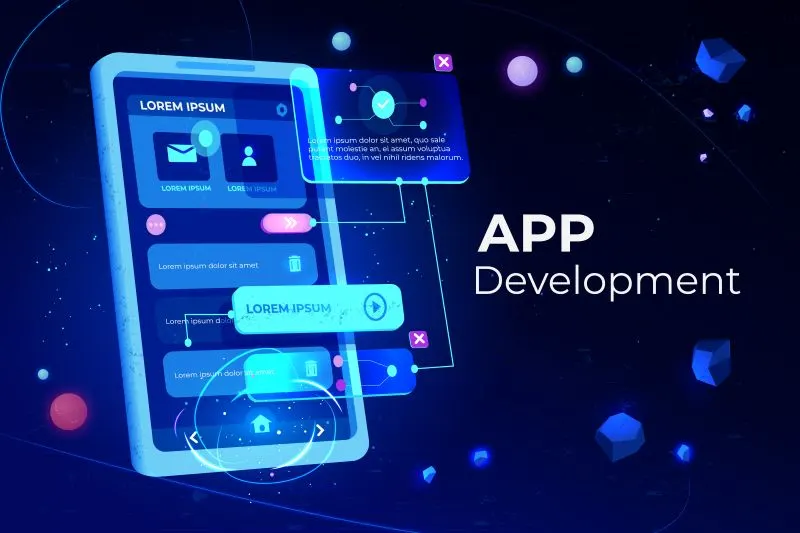The modern hiring process is fast-paced, competitive, and data-driven. Recruiters are under constant pressure to screen candidates faster, reduce time-to-fill, and ensure quality hires—all while managing hundreds or thousands of resumes per job opening.
This is where CV parsing becomes a game-changer.
From automating candidate data extraction to integrating structured profiles directly into Applicant Tracking Systems (ATS), CV parsing is revolutionizing how companies hire today. But what exactly is CV parsing, and why is it so important in the recruitment landscape?
Let’s dive in.
What is CV Parsing?
CV parsing (also referred to as resume parsing) is the process of automatically extracting relevant information from a candidate’s CV or resume and converting it into a structured format. Instead of recruiters manually reading resumes, CV parsing software uses AI and Natural Language Processing (NLP) to:
- Identify and categorize data such as name, contact info, education, experience, and skills
- Parse resumes in various formats—PDF, DOC, DOCX, TXT, etc.
- Translate unstructured resume text into structured data fields for use in databases or ATS
By automating this task, recruiters save time, reduce manual errors, and focus more on strategic hiring decisions.
How CV Parsing Works: A Quick Overview
A modern CV parsing tool leverages several technologies to ensure accurate and efficient parsing:
- 🧠 Natural Language Processing (NLP): Understands the structure and semantics of language to extract and label resume information.
- 🔍 AI Algorithms: Continuously learn from various resume formats and data patterns to improve accuracy.
- 🖼️ OCR Technology: Enables parsing of image-based or scanned resumes by converting them into machine-readable text.
- 🌐 Multilingual Capabilities: Recognizes and parses resumes written in multiple global languages—ideal for international recruitment.
Once parsed, the data is integrated into recruitment systems, ready to be searched, filtered, or ranked.
Why CV Parsing is Crucial in Modern Hiring
1. Massive Time Savings
Hiring teams receive hundreds of resumes per job post. Manual screening of each document could take hours—or even days. CV parsing allows recruiters to process resumes in seconds, freeing up time for high-value tasks like interviewing and engagement.
2. Increased Accuracy and Consistency
Even experienced recruiters can miss key details, especially when fatigued. CV parsing ensures standardized data extraction—no missed skills, no misplaced work history, and no forgotten qualifications.
3. Improved Candidate Experience
Applicants want quick feedback. When parsing tools automate screening and routing, candidates get faster responses, leading to a more positive impression of your employer brand.
4. Seamless ATS Integration
A good parser integrates directly with your ATS or recruitment CRM, eliminating the need for manual entry. This ensures that every candidate is automatically added to your talent pipeline with complete and structured data.
5. Multilingual Support for Global Hiring
Global companies need tools that can parse CVs in multiple languages. Multilingual CV parsing makes it possible to recruit across borders without compromising on data quality or screening speed.
6. Enhanced Recruitment Automation
In an age of AI recruitment, automation is the future. CV parsing sits at the heart of this revolution—enabling automated resume screening, profile enrichment, semantic search, and candidate ranking.
7. Supports DEI & Compliance
By enabling features like resume redaction (e.g., removing name, photo, age), parsing tools support blind hiring practices, promoting diversity and reducing unconscious bias. Many also support GDPR and other data privacy standards.
Use Cases: Where CV Parsing Makes an Impact
✅ Staffing Firms
Process resumes at scale from job boards, emails, or career portals and feed them directly into internal systems in real time.
✅ Enterprises
Accelerate high-volume recruitment drives, campus hiring, or referral campaigns by automating resume ingestion and screening.
✅ ATS/HR Tech Providers
Offer a better user experience by integrating parsing capabilities that allow users to upload resumes and receive structured profiles instantly.
Must-Have Features in a CV Parsing Tool
If you’re evaluating a CV parsing software, here are key features to consider:
- 📌 Parsing Accuracy: How accurately does the tool extract information?
- 🌍 Multilingual Parsing: Can it handle non-English resumes?
- 🔗 ATS & ERP Integration: Is it compatible with your existing systems?
- 🧩 Structured Data Output: Does it deliver data in standard JSON or XML formats?
- 🛡️ Compliance & Security: Does it comply with GDPR, SOC 2, and other standards?
- 🔎 Support for OCR: Can it parse scanned or image-based resumes?
Real Results: The Business Value of CV Parsing
Companies using automated CV data extraction report measurable improvements:
- 🔥 40–60% reduction in time-to-screen candidates
- 📈 Increased recruiter productivity by 2x–3x
- 🤝 Faster candidate engagement, improving offer acceptance rates
- 💼 Better quality of hire due to deeper data insights
Why Choose RChilli for CV Parsing?
🔗 RChilli’s CV Parsing Tool is a trusted solution by leading HR tech platforms, enterprises, and ATS providers worldwide.
It offers:
- High-speed parsing (bulk & real-time)
- 140+ data fields extraction
- Multilingual and OCR-ready parsing
- Seamless integration with Oracle, SAP, Salesforce, and more
- Custom taxonomy and data normalization
Whether you’re a recruiter, ATS vendor, or staffing agency—RChilli provides scalable solutions to parse CVs at scale with unmatched accuracy.
Final Thoughts
In today’s fast-paced hiring environment, CV parsing is not just helpful—it’s essential. From optimizing recruiter workflows to improving candidate engagement and compliance, the value of parsing is undeniable.
By adopting a smart, AI-powered parsing solution like RChilli, organizations can stay competitive, agile, and ready for the future of hiring.













Leave a Reply